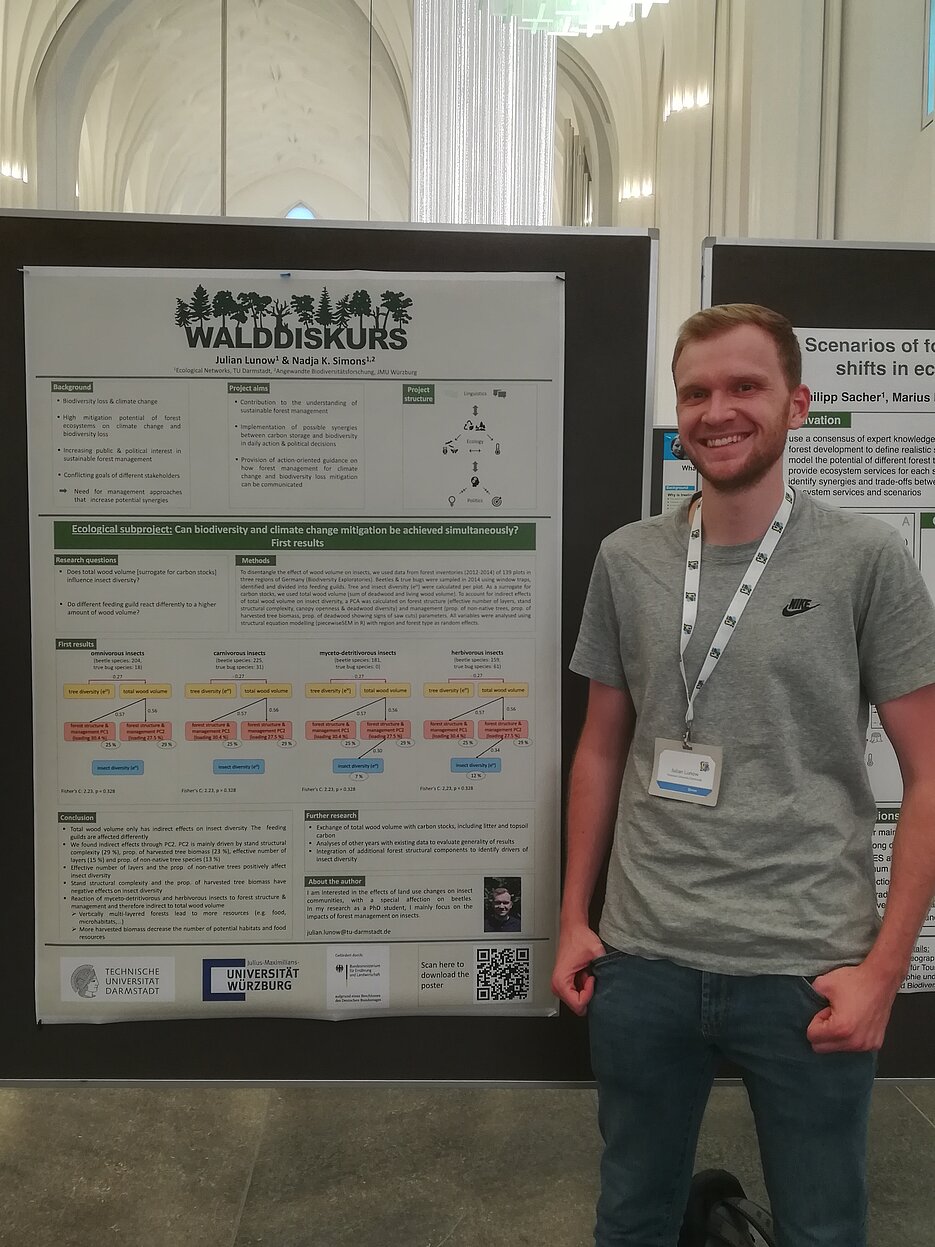Our forest research at the GfOe conference
15.09.2023We presented results from our recent forest projects at the 52nd Annual Meeting of the Ecological Society of Germany, Austria and Switzerland in Leipzig.
Forests provide a range of ecosystem goods and services, from clean water and air to erosoin protection, to timber and game to recreation. Depending on the type of forest and management strategies, different bundles of ecosystem services are provided at different levels. In protected forests, the focus strongly lies on providing habitat for biodiversity or conservation of ecosystem processes. Other ecosystem services such as recreational activities are often restricted or even banned. In forests without protection status, the focus of management was historically on sustainable timber production with other ecosystem services being mostly considered only under specific circumstances (e.g. protection against soil erosion or avalanches in alpine environments or air quality regulation in the vicinity of cities). However, demands for multifunctional forests which provide a multitude of ecosystem services are on the rise and force forest managers and decision makers to evaluate and potentially adapt their management strategies. Recent research on ecosystem services in European forest suggest that perfect multifunctionality cannot be achieved within single forest stands but only at the landscape level.
We looked at this challenge in a previous (BioHolz) and in a recently started project (Walddiskurs) and presented results from both at the 52nd Annual Meeting of the Ecological Society of Germany, Austria and Switzerland in Leipzig. Within the BioHolz project, we estimated levels of ecosystem service potential of the eight common forest types in Bavaria. Based on scenarios of forest development, which were informed by forest experts in a Delphi process, we simulated changes in forest type cover across Bavaria and calculated the proportion of forests which provide each ecosystem service at a minimum or maximum level. With this, we could identify synergies and trade-offs both between ecosystem services and between scenarios of forest change. In the Walddiskurs project, we focus on one of those trade-offs in particular: biodiversity conservations vs. climate protection. While a positive relationship between carbon storage and biodiversity has been shown for the tropics (comparing secondary forests with old-growth forests), the patterns are less consistent for Central European forests. By analysing the relationship between wood volume and insect diversity in three regions of Germany, we can give a first glimpse of the complexity of this relationship.
Philipp Sacher, Marius Mayer, Hubert Job & Nadja K. Simons: Scenarios of forest type change & resulting shifts in ecosystem service potential. 52nd Annual Meeting of the Ecological Society of Germany, Austria and Switzerland. Leipzig (Germany). 09/2023. Link
Julian Lunow & Nadja K. Simons: Walddiskurs: Can biodiversity and climate change mitigation be achieved simultaneously? 52nd Annual Meeting of the Ecological Society of Germany, Austria and Switzerland. Leipzig (Germany). 09/2023. Link








